- Lunar Solo tent
- Liteway PyraOmm Max Tent (set)
- Amok Skjold 10 Ultralight Tarp
- Bushmen Ultralight Hammock ‘Zen’
- Katabatic Flex Quilt
- Amok Fjøl Sleeping Pads
- Coolado ePumps
- Isolation Blanket Foil Underlay
- Walkstool
- R-Values explained
Lunar Solo tent
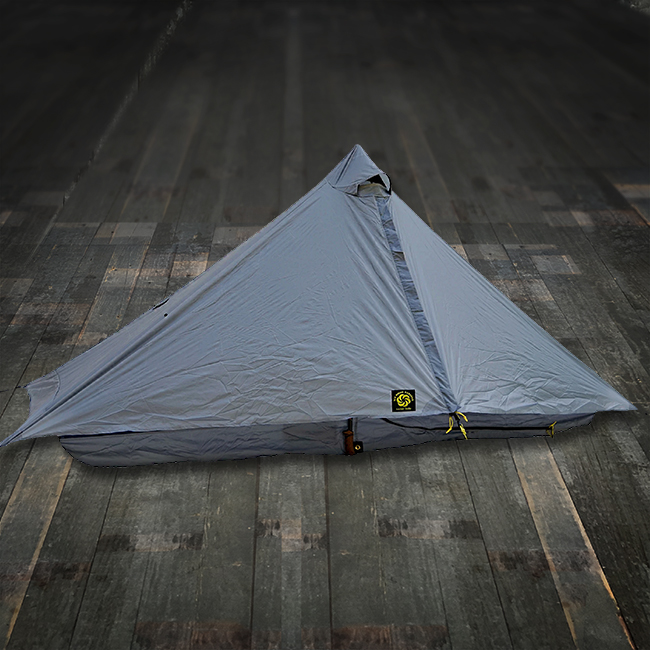
This is my Six Moon Designs Lunar Solo tent. The ultimate single wall solo tent if it comes down to weight, practicality, functionality and comfort. This ultra lightweight (740 grams/26 OZ) tent has plenty of room and all the functional specs you need.
It’s low profile handles wind well, whilst being steep enough to not hold snow. This tent is kept upright by a single 124,5 cm (49″) trekking pole, aluminium, or carbon fiber pole and a 8 Stakes.
The sleeping area is a 6-inch deep bathtub floor, topped by 6 inches of mesh, which ensures excellent ventilation while keeping me separated from low canopy walls. This keeps you dryer should condensation forms on the canopy. The vestibule is set on the long side of the tent to maximise views and ventilation when fully open.
The floor space is a generous 2.4 m2 (26.25 ft2) being 122x229cm. The triangular outside storage space is almost 1 m2 (8.5 ft2).
It all results in a 810 grams weighing 28×11,5cm package, plus the folded 51grams pole at 44 x 2,5cm.
It is constructed with 100% Silicone coated Polyester material reducing fabric stretch and packed volume. The canopy is constructed from 20D material while the floor utilizes a more durable 40D weave. I got the tent with the DIY Seam Grip + Sil (SilNet) set and a 34grams Polycro footprint.
If you are as lazy and spoiled like me: Order it with the full Seam Sealing Service treatment. It might be done neater and better by experienced hands than by doing it yourself.
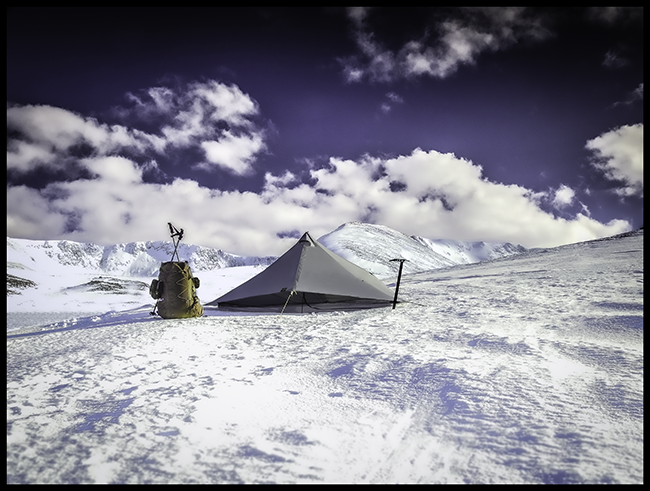
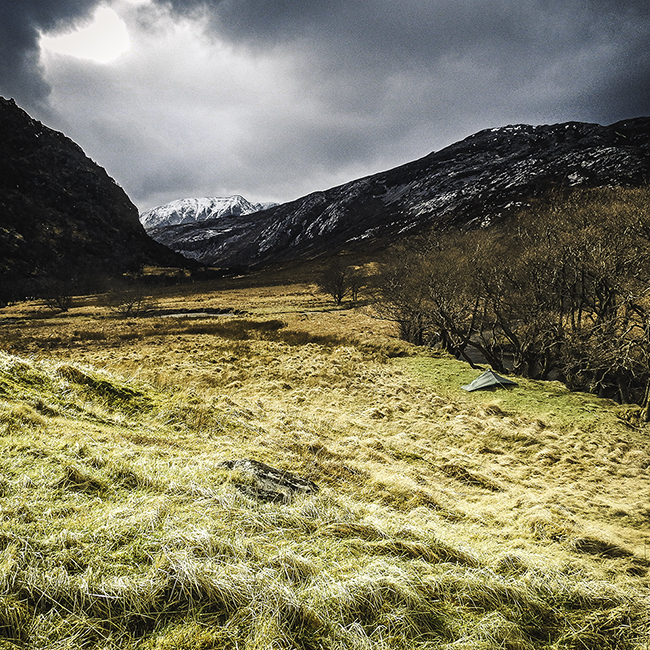
Here are some practical experiences learned by using this tent:
- A very light and durable tent. Takes very little time to pitch (an average of 3 minutes).
- I have NO condensation issues, even though I sometimes pitched really low (meaning there was no mesh gap left on the wind side of the tent.
- As I sometimes leave my tent pitched while going for little trips using my trekking poles, I use a carbon pole.
- Each half of the vestibule is connected to the front guyline by a webbing loop, they go into a single plastic hook that slides over the guyline by use of a prusikknot. Getting the webbing loops into the hook (and make them stay there) isn’t easy.
Easy fix: attach two 2mm chord loops to the webbing. - I used the tent in Scotland with very strong winds, having no issues.
Liteway PyraOmm Max Tent (set)
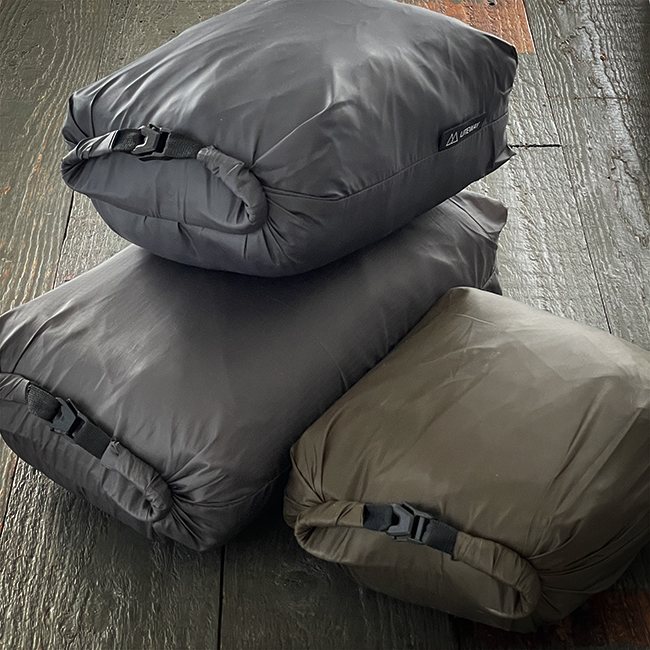
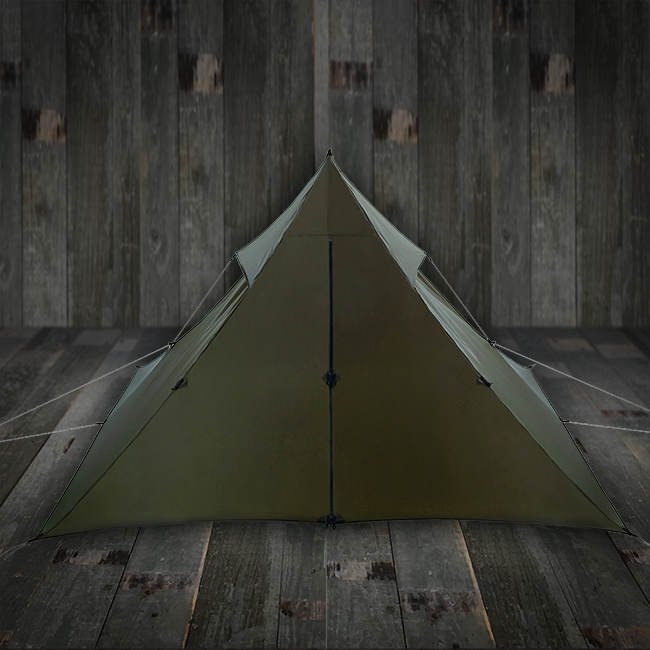
Liteway chooses to call the PyraOmm Max outer a ‘tarp’, when I use it without inner tents I call it a ‘shelter’, but in use with (either of the two) inners I’ll call it a ‘tent’. It comes in three sizes, I use mine (the largest) as a:
- 1 to 4 person shelter, (276cm x 276cm cm, at a total of 735 grams with guylines and stuff sack.)
- 3 or 4 person tent, combined with the PyraOmm Max Full Mesh (240×240 cm, at a total of 1335 grams)
- 1 or 2 person tent with loads of internal cooking and storage area, combined with the PyraOmm Max Half Mesh (240×130 cm, at a total of 1165 grams)
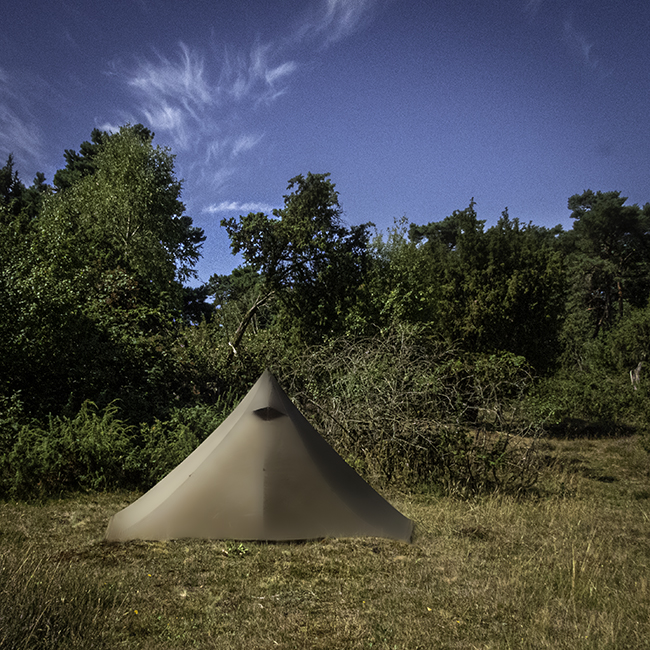
This 4 person outer tent has a couple of prime features:
- It’s lightweight: 735 g with guylines and stuff sack.
- It is huge: 276 x 276 cm / height 185 cm.
- It can be suspended from the top.
- It only uses 4 (or 6) pegs.
Other features are:
- 2 entrances with YKK AquaGuard water repellent zipper;
- 2 ventilation windows;
- wind resistance design;
- loops with hooks for fastening bivi (if used as shelter) or other gear;
- loops with linelock for comfortable setup and adjustments;
- strengthening with X-Pac in top of the pyramid;
- catenary cut/curved edges providing a tighter pitch and saving some weight
- UHMW PE guy lines;
- small packed size.
The components of the PyraOmm Max system can be setup using:
- a pole in the center
- 2 vertically connected trekking poles
- 2 V-shape connected poles (using an optional A-frame connector)
- suspended for the top.
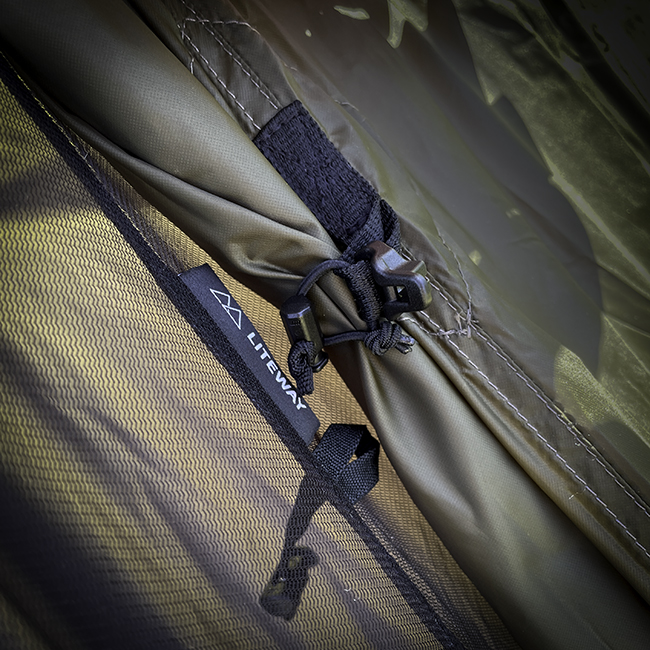 | 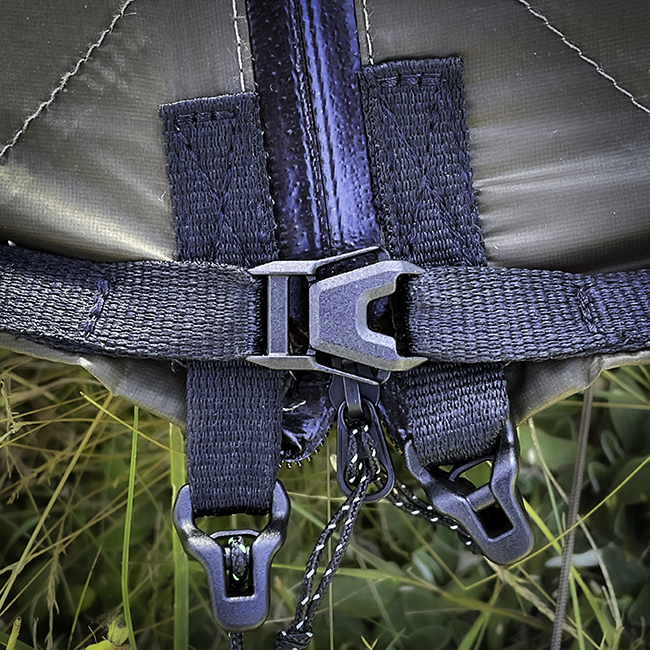 |
If I can’t hang it from the top, I use a pole. (The V-shape poles would need a length of 220cm each for this largest version of the PyraOmm.)
Setup takes me 2 minutes or 4 with full inner. (Stake out the 4 corners into a square. Put a pole in the middle, or suspend. Tighten guy lines and stake out the two vent-lines.)
The materials used are:
- 1.1 oz Silpoly 20D Ripstop 2000mm fly sheet/canopy
- YKK Aquaguard #3 zippers
- 210D HDPE Gridstop?
The complete set contains: PyraOmm Max outer, UHMW PE guy lines, stuff sack.
The seams of the tent are non-sealed, so you should do that yourself (McNett Silnet Seam Sealer.)
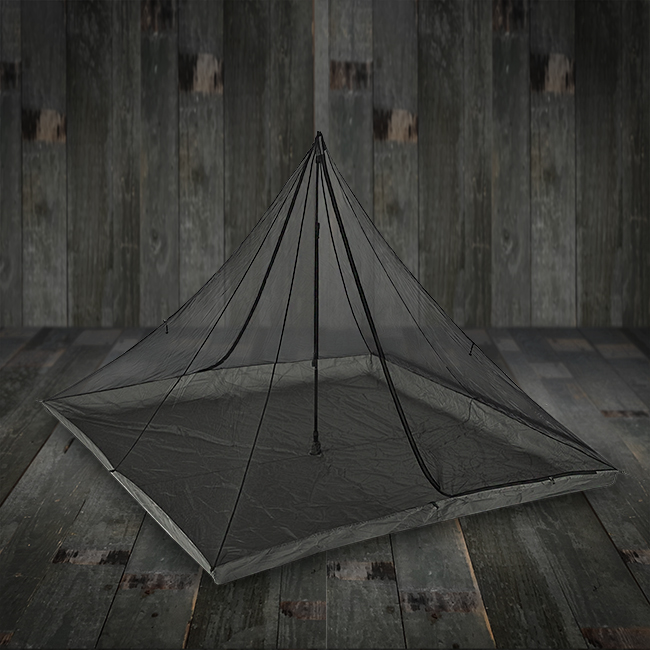
This is the full version Ultra light bug shelter PyraOmm Max Full Mesh inner, for 4 person.
Protects against insects and adds a few degrees to the overall comfort temperature of the sleeping system. I use it with the PyraOmm Max outer to you create an Ultra lightweight double wall frameless tent.
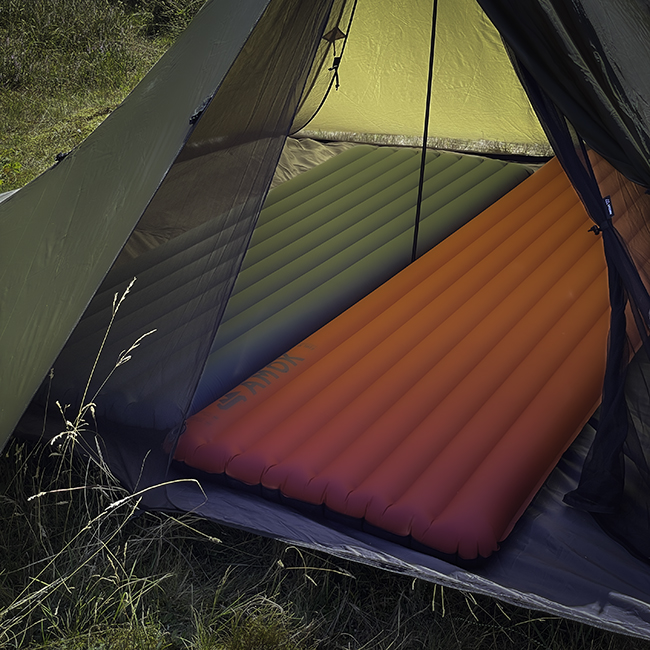
The materials used are:
- 1.1 oz Silpoly 20D Ripstop 2000mm ?
- 210D HDPE Gridstop floor/tub
- Nylon NoSeeUm Mesh
Weight: 600 grams with guylines and stuff sack
Size: 240 cm x 240 cm x height 180 cm
The complete set contains: PyraOmm Max Full Mesh, cords, stuff sack
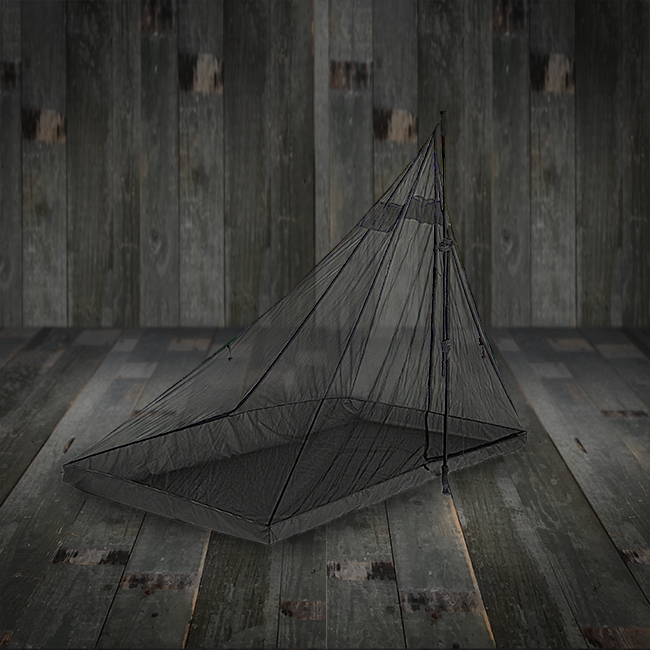
This is the half version Ultra light bug shelter PyraOmm Max Half Mesh inner, for 2 person.
Protects against insects and adds a few degrees to the overall comfort temperature of the sleeping system. I use it with the PyraOmm Max outer to you create an Ultra lightweight double wall frameless tent.
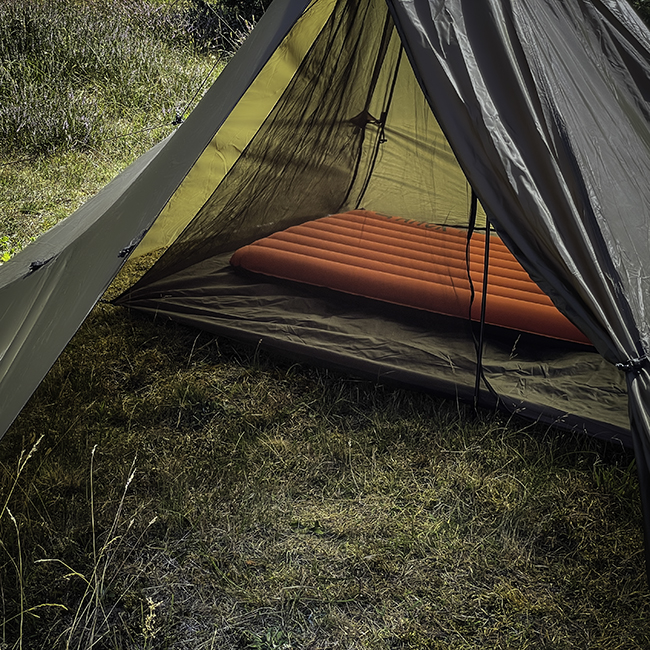
The materials used are:
- 1.1 oz Silpoly 20D Ripstop 2000mm ?
- 210D HDPE Gridstop floor/tub
- Nylon NoSeeUm Mesh
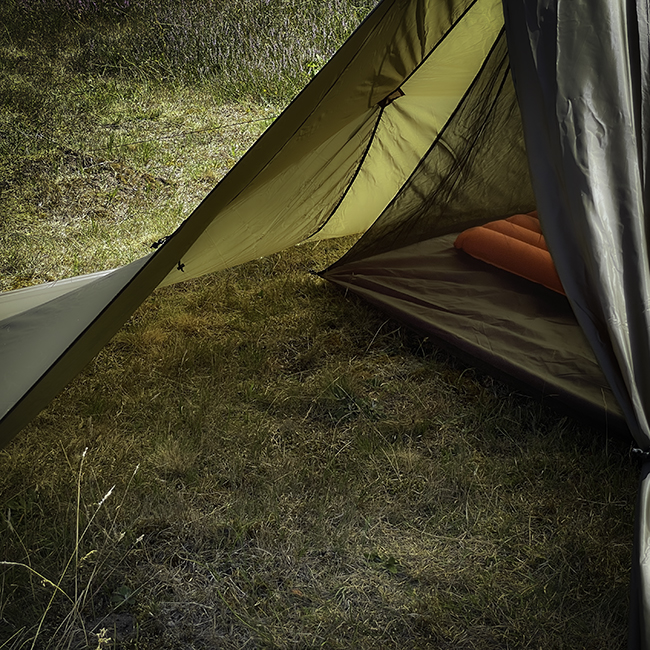
Weight: 430 grams with guylines and stuff sack
Size: 240 cm x 130 cm x height 180 cm.
The complete set contains: PyraOmm Max Half Mesh, cords, stuff sack


LiteWay is a European company, based in the Ukraine.
They specialize in functional and convenient ultralight gear.
Amok Skjold 10 Ultralight Tarp
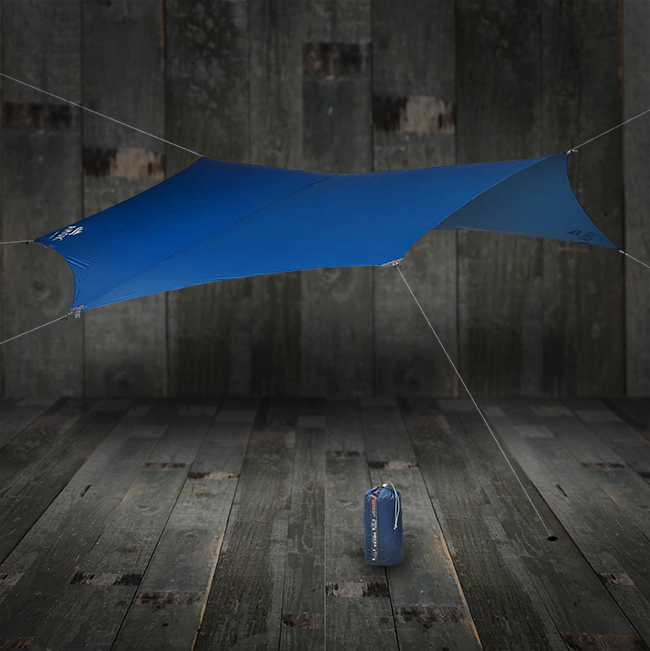
This is my UltraLight tarp. The Skjold 10 Ultralight is a true UL weighing a mere 520 gr, including the reflective guylines, stakes and stuff sack. The Setup options for this silicon nylon tarp include suspension between two trees, the use of trekking poles or sticks. At 380 x 300 cm it has plenty of coverage. The use of 15D DRS Silicone Nylon (3000 mm waterproof) makes this ultra lightweight fabric pliable, slippery and able to shed water and snow. The reinforcements with 210D Dominico Nylon with Dyneema RipStop and Hypalon corners makes this tarp extremely strong for its weight. Reflective guylines, adjusters and micro carabiners are pre-attached. Six lightweight stakes are included, all with reflective pull cords, making them easier to spot in the dark.
Bushmen Ultralight Hammock ‘Zen’
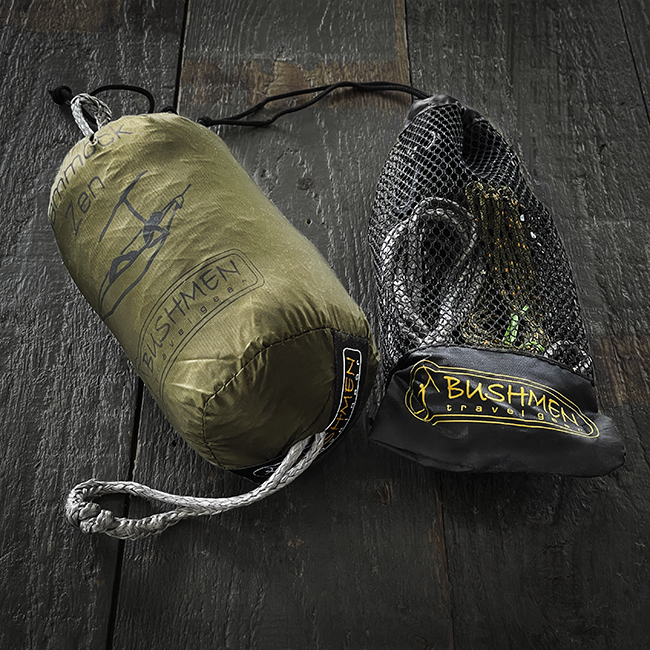
The Bushmen Ultralight Hammock ‘Zen’: Argueably the lightest on the market full-size, 3m x 1.45m hammock, packed into a tiny (350ml, Ø5,5x15cm) bag. It weighs a mere 150g! Made out of ultralight micro-ripstop 15D nylon, it hold loads up to 130kg. Included are two 3mm Dyneema cords with a tensioning system, the so-called Whoopie slings and a mesh bag. The mesh bags function as wet storage and as holdall when attached to the hammock.
Katabatic Flex Quilt
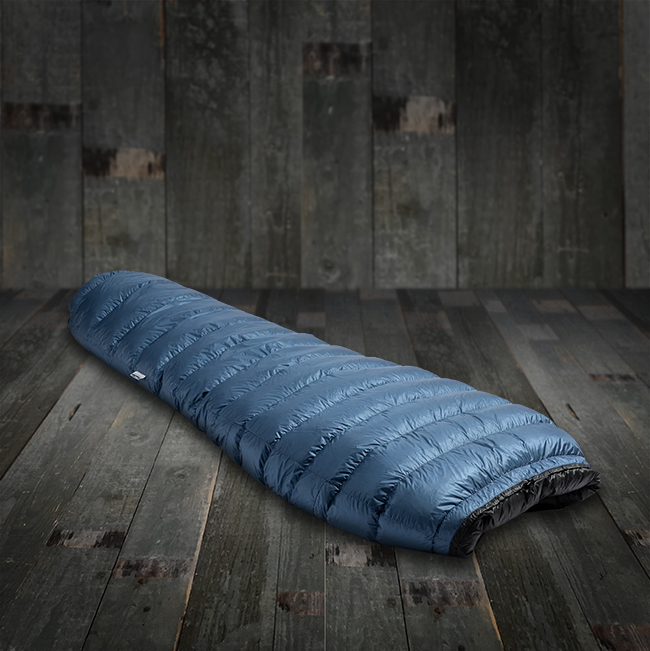
I use the Katabatic Flex Quilt, -9,5°C, 183 cm, Wide, 850 fill power with ExpeDRY Duck Down. (Imperial: -15°F / 6′)
Quality
These US-made quilts may seem an expensive option (€ 500+) for a European hikers and this isn’t the lightest quilt available. But, if you are willing to carry a couple extra grams, you’ll get the absolute best quality and a lot of extra comfort. Katabatic will not cut corners to cut minor amounts of weight. The quality is excellent, stitching and snaps are high quality as well and this quilt outperforms all quilts and sleeping bags I have owned and tried. A big feature of these quilts is the pad attachment system. Unargueably the best design on the market for preventing drafts, offering versatility, comfort and efficiency. It also comes with removable webbing straps for use without a sleeping pad.
Quilts
The basic idea of a quilt style sleeping bag is to eliminate the insulation that is at the bottom of a conventional sleeping bag. The reason behind this is that with a conventional sleeping bag, the insulation is crushed and does lack the loft it needs to trap warm air effectively. By using a quilt you’re saving weight and volume. One of the main fears about using quilts is the expectation/assumption that they won’t be warm enough or that the bottom opening will create gaps letting air in. Both proof to be unfounded when using this Katabatic quilt. Obviously, when using a quilt, the insulation and quality of your sleeping pad directly affects your sleeping system.
Insulation
First of all and most important: These Quilts live up to their temperature ratings. You know what you buy!
The continuous baffles are one of the important features of these quilts, along with the the differential cut. Continuous baffles allow the down to be manually moved as temperatures dictate for maximum versatility. A Differential Cut is assures quilts with adjustable girth, to get maximum loft and space for the down, which ultimatly is the effective isolation. The overstuffed collar fits comfortably against the neck and seal this critical area from drafts and elastic binding around the bottom opening prevents gaps and drafts at the sleeping pad.
The main part of this quilt being ‘flex’ is the possibility to fully open the quilt as a blanket ánd the different option the footbox offers.
Foot box
The zippered foot box features a versatile system that offing several options for ventilation. Along with the zipper, the drawstring, snap, and down-filled draft blocker allow locking out the cold, allow in a little fresh air, or completely open up to a blanket. The overstuffed baffles over the foot section provide extra insulation. When the temperature drops, and you need a closed foot box, the down-filled draft blocker and snap system fill the gaps, while allowing multiple venting options for warmer weather.
Materials
The duck down used for this quilt is produced by Allied Feather, certified through both the bluesign®and Responsible Down Standard®programs. the Track My Down program. It has been treated with ExpeDRY to provide additional resistance to unwanted moisture, so it dries faster than untreated down if it does get wet.
The shell is made out of Pertex Quantum Eco Ripstop (2,5gr/meter), one of the best for this type of ultralight applications, keeping the down drier and with outstanding DWR. This Eco version of Pertex Quantum is made from recycled yarns.
The softest fabric you’ll find for a liner of an ultralight sleeping bag is this Pertex Quantum plain weave taffeta (3gr/meter). It is silky soft and not as clammy or crinkly as other fabrics.
Specs (Regular Wide version)
- Fits to: 182cm tall person
- Shoulder width: 147cm (Similar to 170cm mummy bag)
- Hip width: 127cm
- Foot width: 112cm
- Total weight: 819gram
- Packed Size: 20x37cm, 12,5 liter
- Including Silnylon Stuff Sack, Storage Bag of 100% recycled, breathable fabric and 2mm Cords & Webbing straps for attaching to your pad.
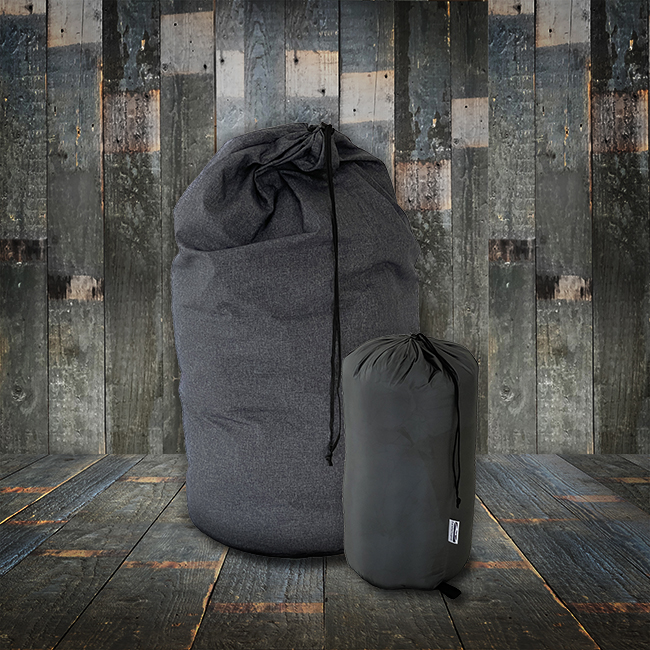 The Storage Bag (100% recycled, breathable fabric) & Silnylon Stuff Sack | 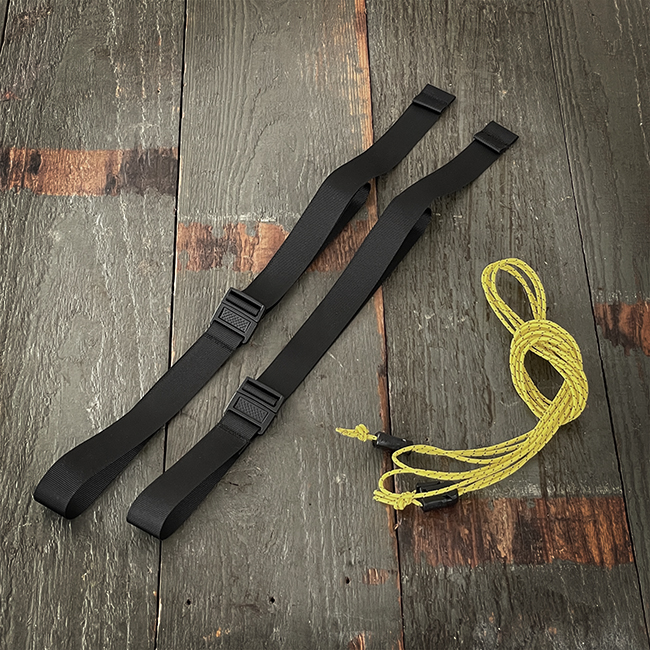 2mm Cords for attaching to your pad & Webbing straps |
Amok Fjøl Sleeping Pads
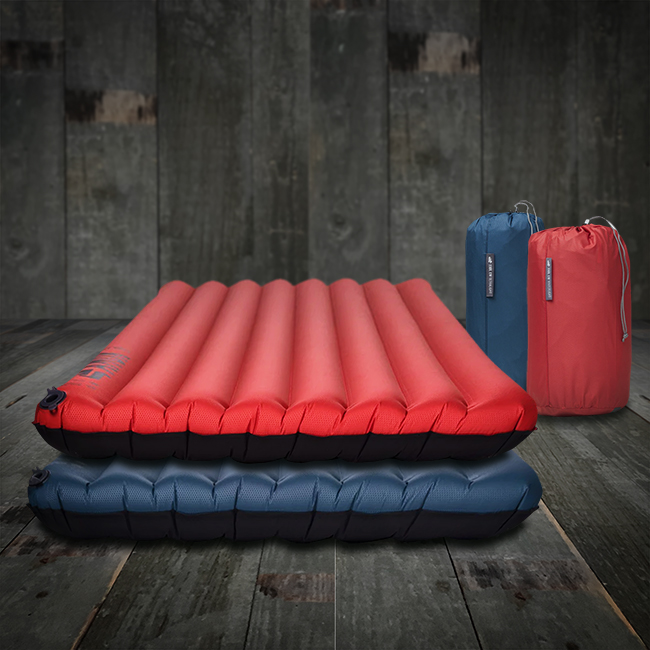
bottom: Ultralight
We use the sleeping pads of the Norwegian company Amok Equipment. These pads are made of a thin but strong Polyester Hex Mesh Fabric top and Polyester Ripstop Silicone bottom, with High Loft synthetic insulation welded to the top and bottom layers. They come with spacious stuff sacks, a large pump bag and repair kits.
The two versions we use are the Ultralight 3-season pads and the Winterlight 4-season pads.
| Fjøl Ultralight | Fjøl Winterlight |
|---|---|
| – Ultra Lightweight 3-season pad – High Loft synthetic insulation (60g/m²) – I use the Long Wide (LW) version. – Super-fast inflation and deflation. – R-value: 3.5 – Dimensions: 198 x 65 x 9 cm – Weight: 665 g – Packed: Ø11 x 26 cm, incl. pad, pump bag, stuff sack & repair kit. – Packed: 2,4 liter | – Lightweight. Yet Incredibly Warm. High Loft synthetic insulation (200g/m²) – I use the Extra long (XL) version. – Super-fast inflation and deflation. – R-value: 5 – Dimensions: 220 x 65 x 9 cm – Weight: 1005 g – Packed: Ø16 x 27 cm, incl. pad, pump bag, stuff sack & repair kit. – Packed: 5,3 liter |
Coolado ePumps
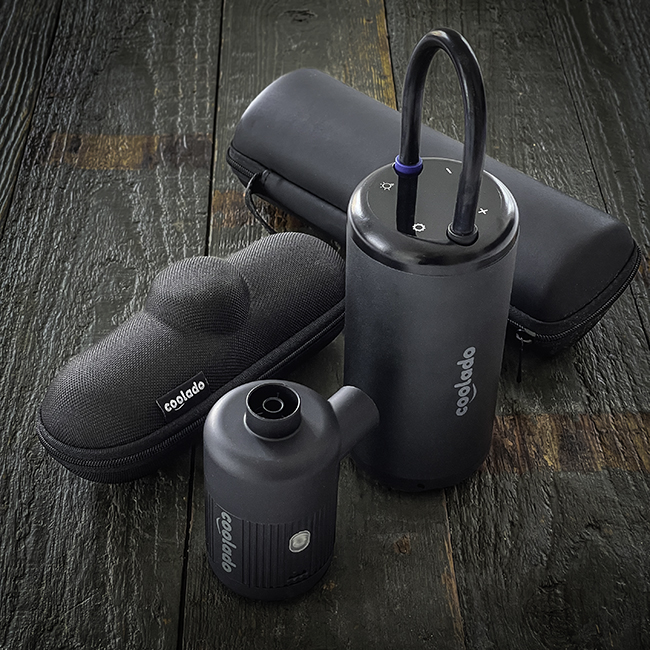
Call me Lazy! But I use the Coolado ePump to pump my inflatables. It saves my breath, my energy, it’s a pure luxery and it’s a good way to make friends!
Being a ‘volume’ pump (with a pump capacity of 400 liters/minute), rather than a ‘pressure pump’, it inflates ad deflates my kayak float bags, mats, cushions and vacuum bags in a breeze. My mats inflate in half a minute! It’s rechargable and with it’s 1.5 hours of constant airflow it’ll inflate over 70 mats. The ePump only weighs a mere 140 grams at Ø 55mm and 95mm high and comes with 3 accessory nozzels, a USB recharge cable and Protective case.
You know I’m a strong believer in the Leave-No-Trace principle, but, should your campsite have a fire pit: this is the tool to get your fire going in no-time.
Isolation Blanket Foil Underlay
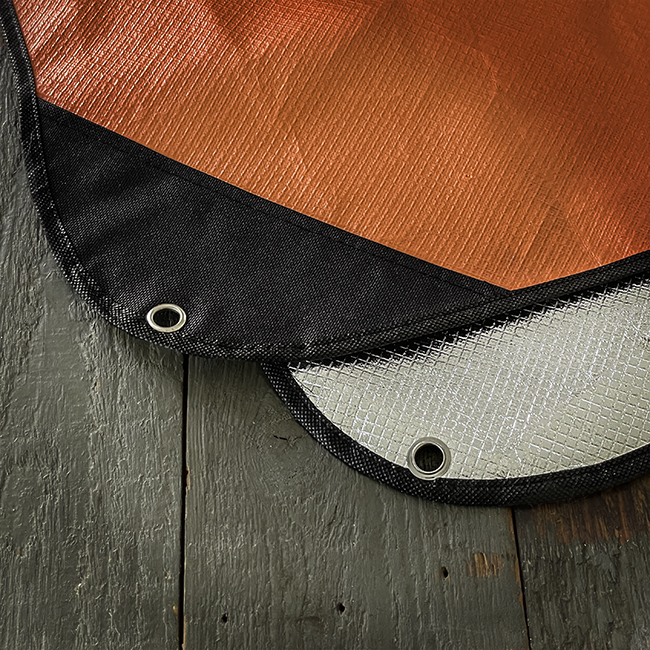
I use the Origin Outdoors emergency blanket ‘Reflex’ as a (mostly basecamp) isolation layer on my groundsheet, supplying extra R-value to my sleeping system. Weighing 360 grams, this 200x150cm blanket fits my two person tent well. Even at this low weight, this blanket is very durable, tear resistant and thus employable for loads of camping and emergency uses. It’s a polyester woven netting with metallized coating, backed by a polyethylene coating.
Walkstool
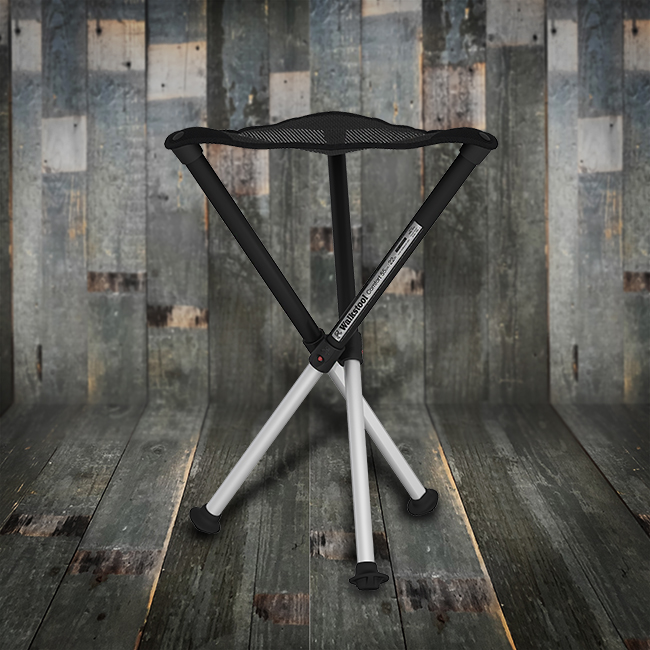
I own two of these awesome stools. The Comfort 55 model. These are the best little stools, weighing a mere 900 grams. Low enough to cook on ground level, high enough for eating in an upright position and really sturdy.
I find the ‘Steady’ accessory to be of great practical use. It’s a three way piece of webbing, keeping the rubber feet from sinking into loose ground.
The stools can even be used without the lower segment of the legs extended. This reduces the height from 55 cm to 33 cm! It also provides a practical solution for sitting on steeper slopes.
The Walkstool is a practical piece of equipment for me on photo assignments on location. The low weight and small packed size allow me to have a stool with me for unknown circumstances. I still have a the smallest (and lightest) model on my wish list for backpacking photography trips. I can’t think of a more comfortable way of staking out wildlife than this.
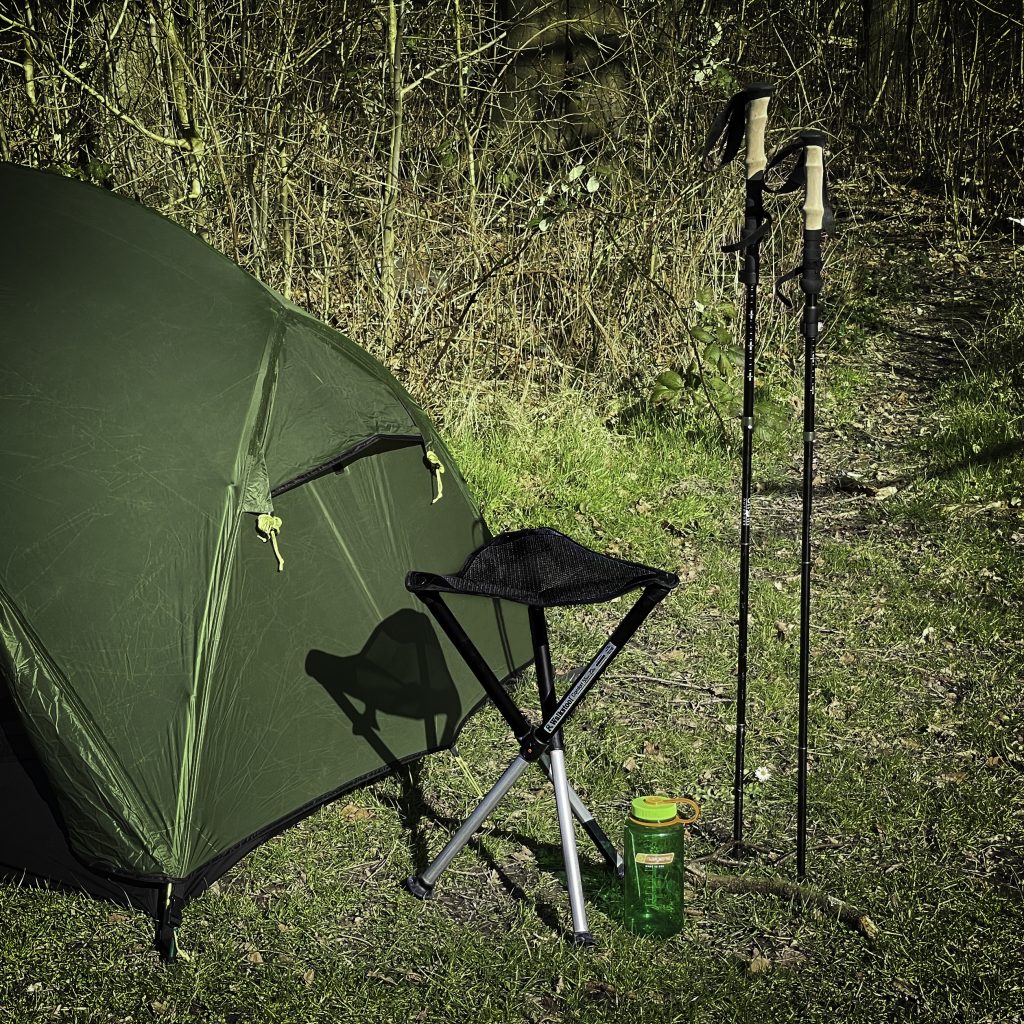
 Walkstool is an innovative Swedish company that introduced the only three-legged stool (to date) in the world with telescopic legs in 1997.
Walkstool is an innovative Swedish company that introduced the only three-legged stool (to date) in the world with telescopic legs in 1997.
R-Values explained
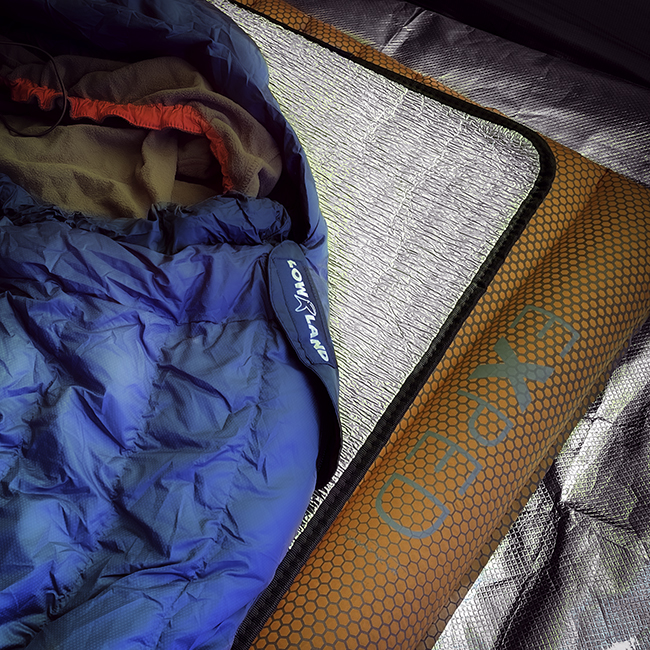
Scanning websites, shops and campers logic/knowledge, I came across a wide range of opinions on insolation and R-values. Regretfully the R-value standard is only used on some of the gear we use to keep us warm. I personally like the ‘scientific’ nature of the (2020) ASTM FF3340-18 R-value standard. I use the term ‘Scientific’ with some reluctance, because there is no actual formal supervision/enforcement on the published claims.
Metric or Imperial
The first cause of uncertainty amongst users is the difference in core units of measurement: Metric or Imperial. The ridiculous aspect of this standard is the fact that it doesn’t solely use the worldwide standard units of measurement: Metric. (Metric: 7.5 billion users versus Imperial: 400 million users.) So let me shine some light on that first, with regards to R-value. Here’s a table compairing the values which you’ll find advertised on sleeping products in the first two columns, the third column contains the corresponding intended usage:
R-Value standard ASTM FF3340-18:
| EU/Metric (M2*K/W) | US/Imperial (ft2*oF-h/Btu) | |
| RSI-value | R-value | Sleeping System Intended Use |
| 0,2 | 1 | Summer: minimum 5oC and above |
| 0,3 | 1,5 | 3 season: down to -10oC |
| 0,4 | 2 | 3 season: down to -10oC |
| 0,4 | 2,5 | 3 season: down to -10oC |
| 0,5 | 3 | 3 season: down to -10oC |
| 0,6 | 3,5 | 3 season: down to -10oC |
| 0,7 | 4 | 4 season: below -10oC |
| 0,8 | 4,5 | 4 season: below -10oC |
| 0,9 | 5 | 4 season: below -10oC |
| 1,0 | 5,7 | 4 season: below -10oC |
| 1,1 | 6 | 5 season: extreme temperatures |
The intended use column tells what the average needed value for which season can be. Cold sleepers might want to up these values.
Stacking values
But that’s not all. It can’t be that simple. The next step is to know to what value the individual components of your sleeping system are summing up. As I cannot publish all different possibilities of sleeping systems, I made up one possible system, with many of the component one COULD add:
| System Component | Temperature Compensation | R-value | R-value | Explanation/Source value |
| 4 season Tent, single layer, breathing | temp raise up to 15°C, windchill decrease -6°C | average winter windchill Scottish Highlands: -6°C | ||
| 3 season Tent, double layer, ventilated | temp raise up to 5°C, windchill decrease ? | average spring/autumn windchill Highlands: -4°C | ||
| Sleeping bag | Comfort temperature -10°C | Lowland Outdoor Serai 600 II | ||
| Sleeping bag liner | Provide up to 18°C of extra insulation | Sea-to-Summit Thermolite Reactor Fleece Liner | ||
| Sleeping mat | 0,9 | 5 | Fjøl Winterlight | |
| Close cell mat | 0,4 | 2 | Therm-a-Rest Z lite SOL Sleeping Pad | |
| Foil layers (Rescue blanket) | 0,1 | 0,6 | SOL Rescue Blanket | |
| Foil layers (Insulated) | 0,3 | 1,8 | Origin Outdoors Sleeping mat ‘Alu’ | |
| Foil Tent underlay | 0,2 | 1 | Origin Outdoors emergency blanket ‘Reflex’ |
But
This isn’t exact science and much is based on research and comparison, but it povides some insight on what your options are. There are a couple of important ‘but’s’ to discuss:
Sleeping bags
We have a standard for rating sleeping bags, the ISO 23537 standard. The short version is, that it let’s manufacturers provide a rating for Comfort- and a Limit temperature ranges for each bag.
The Comfort Range is the temperature range where a “standard” woman is comfortable, she is “not feeling cold,” in a “relaxed posture.”
The Transition Range is the temperature range where a standard man is “in a situation of fighting against cold (posture is curled up inside the sleeping bag), but in thermal equilibrium” and not shivering. That means that somewhere within this range is likely the performance limit of your bag.
The Extreme Range is the temperature range “where a strong sensation of cold has to be expected. There is risk of health damage by hypothermia. A sleeping bag should only be used in this range in an emergency.”
So, should brands and/or shops want to facilitate an understandable method of informing their customers: This is the way to do it:

So, use a sleeping bag with a COMFORT RANGE that suits the conditions and BE AWARE that (often) you are only 5°C away from it’s (and your) limit. So stay clear of the Limit Range!
Do not not to get a sleepingbag that’s too warm either; if you sweat, you’ll wake up cold. This is why many of us have several bags. (Or consider a sleeping bag with ventilation options.)
Clothes
Try to use dry dedicated sleeping clothing. I use a light merino baselayer set, containing long underpants and long sleeve top with a (North x North) hooded neck gaiter, gloves and socks as options for pushing my bag’s performance. I use a light merino underware set. By aware of layering all the room out of your sleepingbag.
Tents
A breathing tent needs to shed snow. Snow isolates and thus blocks the breathing function, as can water. A tent isn’t supposed to keep you warm, but because a tent blocks wind and traps air, it will always feel warmer inside a tent than outside. An average human body in rest produces 80 to 120 watts per hour, ofwhich the better part will be held by your sleeping bag for some time and it can raise the temperature in a small tent with 10°C.